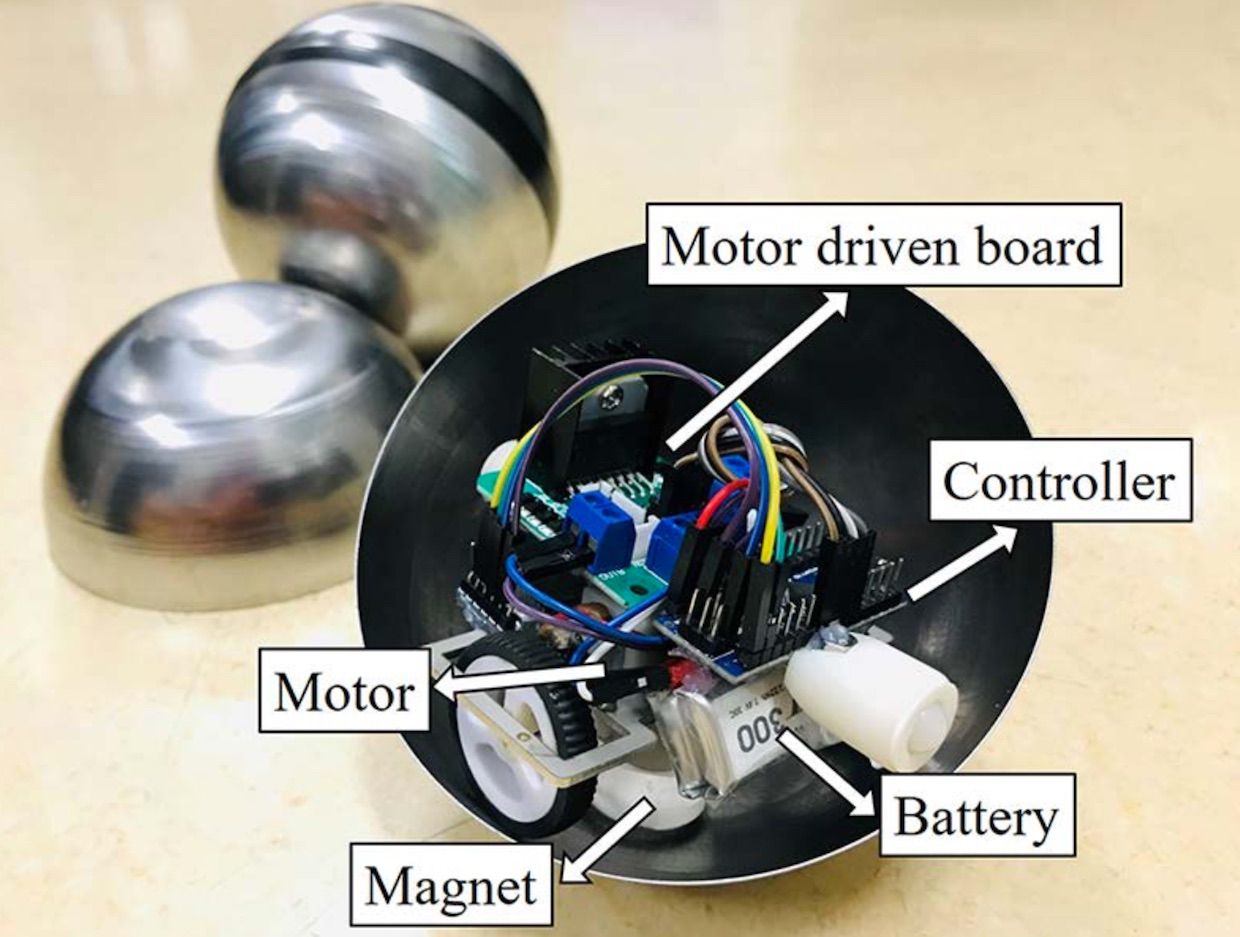Metal Spheres Swarm Together to Create Freeform Modular Robots
Swarms of modular, self-reconfigurable robots have a lot going for them, at least in theory- they're resilient and easy to scale, since big robots can be made on demand from lots of little robots. One of the trickiest bits about modular robots is figuring out a simple and reliable way of getting them to connect to each other, without having to rely on some kind of dedicated connectivity system.
This week at the IEEE/RSJ International Conference on Intelligent Robots (IROS), a research team at the Chinese University of Hong Kong, Shenzhen, led by Tin Lun Lam is presenting a new kind of modular robot that solves this problem by using little robotic vehicles inside of iron spheres that can stick together wherever you need them to.
Typically, modular robots are relatively complicated and finicky things, because the connections between them have to combine power, communications, and physical support, leading to robot-to-robot interfaces that are relatively complicated. And we usually see modular robots that emphasize reconfigurability as opposed to any kind of inherent single-module capability. Swarm robots, on the other hand, do emphasize single robot capability, although the single robots are intended to be most useful as part of a large swarm.
 Photo: Chinese University of Hong Kong-Shenzhen The internal mechanism that FreeBOT uses to move includes a motor and a magnet.
Photo: Chinese University of Hong Kong-Shenzhen The internal mechanism that FreeBOT uses to move includes a motor and a magnet. FreeBOT is a sort of hybrid between these two robotic concepts. Each FreeBOT module consists of an iron sphere, inside of which is a little vehicle of sorts with two motorized wheels and a permanent magnet. The magnet keeps the vehicle stuck to the inside of the sphere, and when the wheels spin, it causes the shell to roll forward or backward. Driving the wheels independently turns the shell. If this looks familiar, it could be because the popular Sphero robots have the same basic design. A single module can do a fair amount on its own, with good mobility and some neat tricks around ferromagnetic surfaces.
 Photo: Chinese University of Hong Kong-Shenzhen
Photo: Chinese University of Hong Kong-Shenzhen How two FreeBOTs connect to one another and separate from each other.
Since each robot has a ferromagnetic shell plus an internal permanent magnet, attaching one robot to another robot is relatively simple. Two robots can touch each other without connecting, since the iron shells are not permanent magnets. To make the attachment, the permanent magnet on the bottom of the little internal vehicle has to get close to the point at which the two spheres are touching, and when it does, the permanent magnet excites a magnetic field in the shells of both robots, causing them to stick together. The exact alignment is very forgiving, and the connection can happen absolutely anywhere on each robot, which is far more versatile than just about any other modular robotic system. Disconnecting simply involves moving the internal vehicle away from the connection point, which removes the magnetic field. Combining multiple FreeBOTs is where things get interesting, since it's possible to create blobs of robots or chains of robots or use a small pile of robots to help one module overcome obstacles. Ferromagnetic surfaces can be leveraged even more by a swarm than by a single module.
There are some constraints to the current generation of FreeBOTs; most significantly, they're remote controlled, without much in the way of onboard sensors (or any obvious way of adding them). Recharging the batteries also seems like it might be difficult. The researchers are working on ways of making the swarm of FreeBOTs at least somewhat autonomous, though, and they say that they plan to make a whole bunch more of them to fully demonstrate the enormous potential of FreeBOT." Here's a peek of what a bunch of FreeBOTs can do:
FreeBOT: A Freeform Modular Self-reconfigurable Robot with Arbitrary Connection Point - Design and Implementation," by Guanqi Liang, Haobo Luo, Ming Li, Huihuan Qian, and Tin Lun Lam from the Chinese University of Hong Kong, Shenzhen, will be presented at IROS 2020.